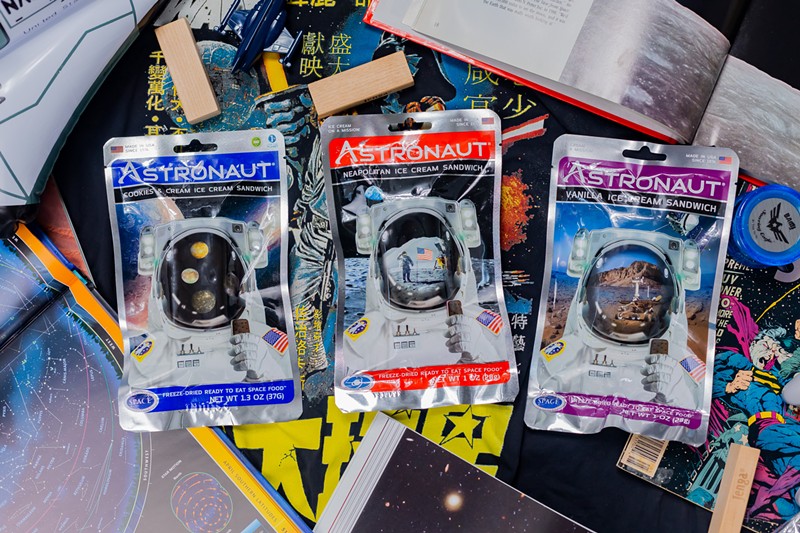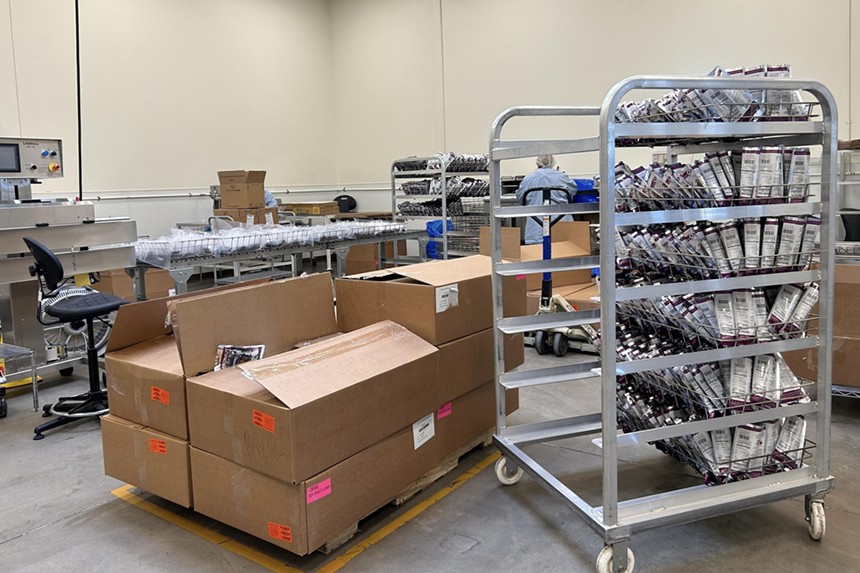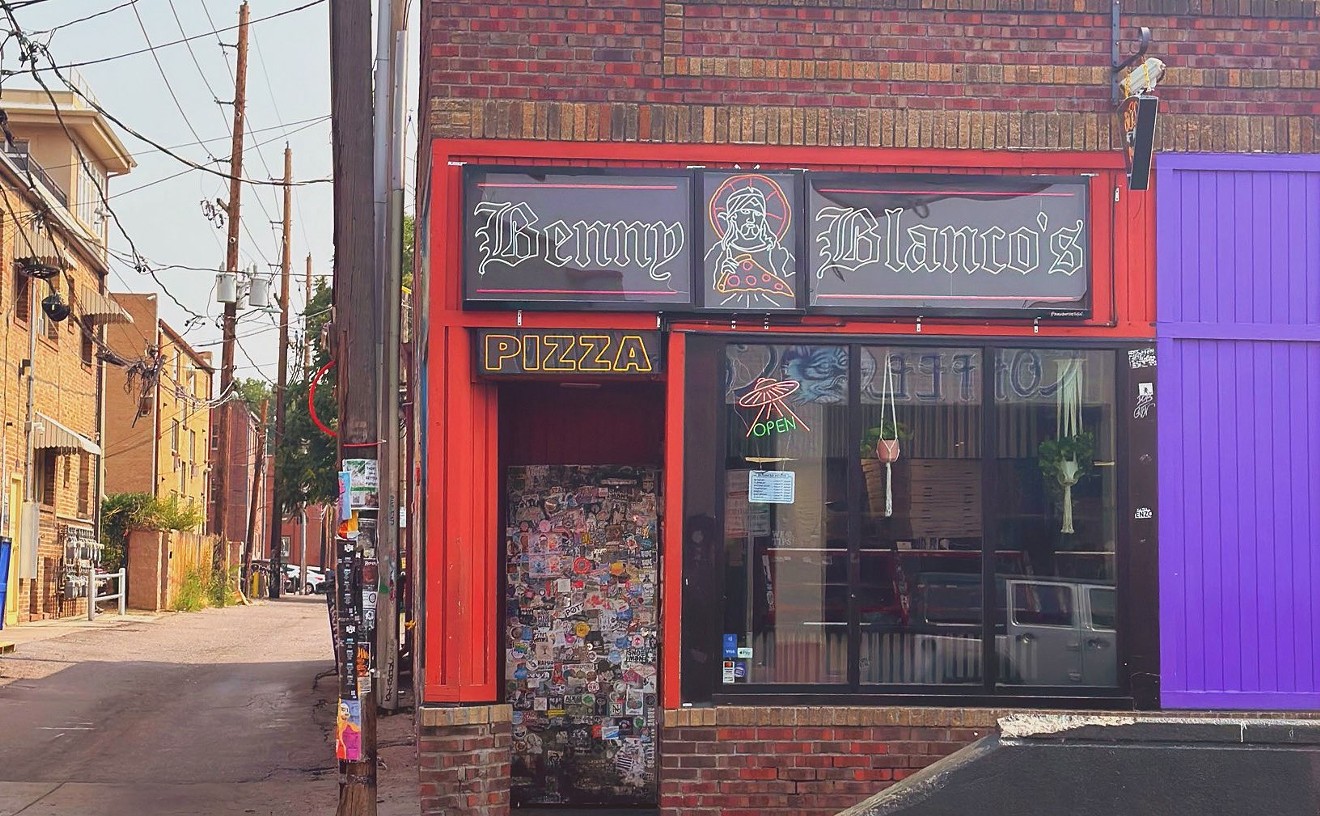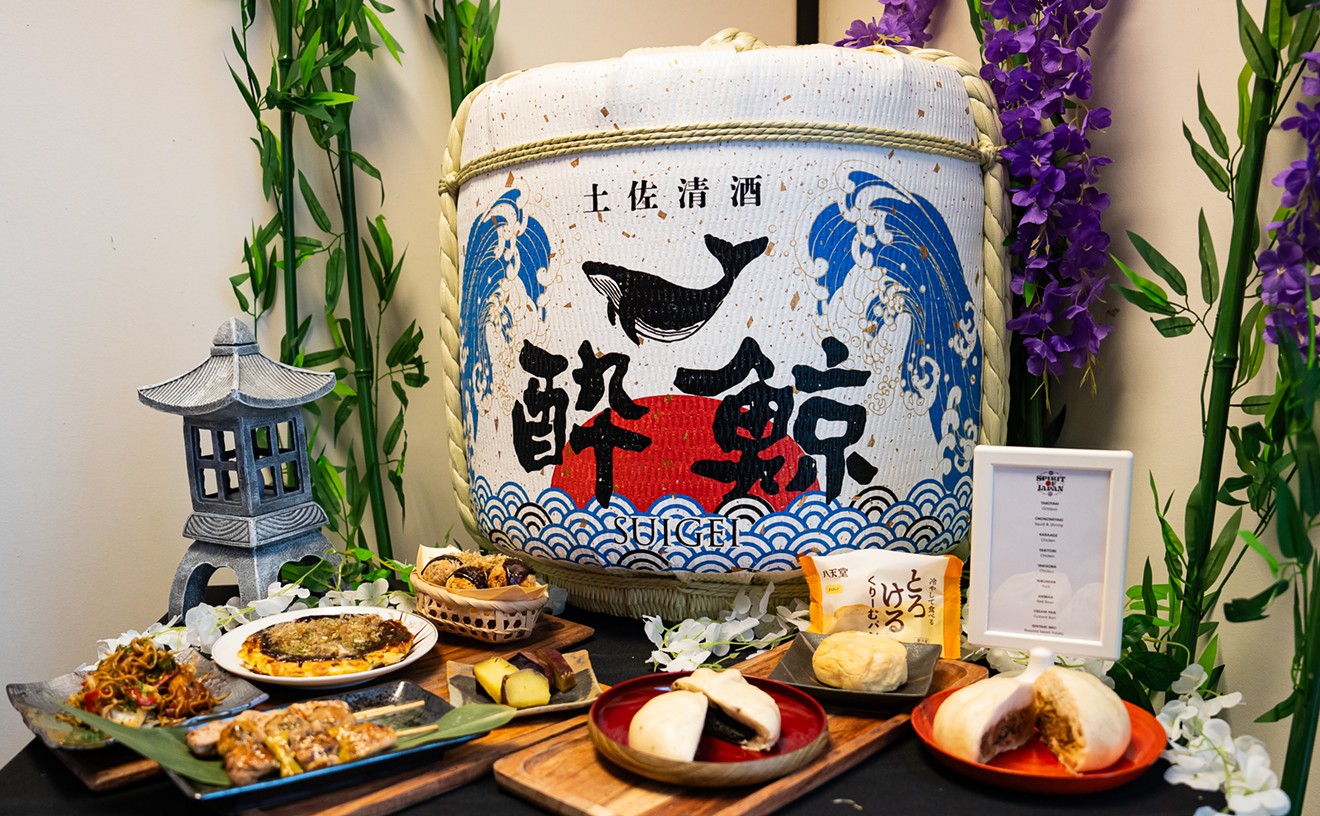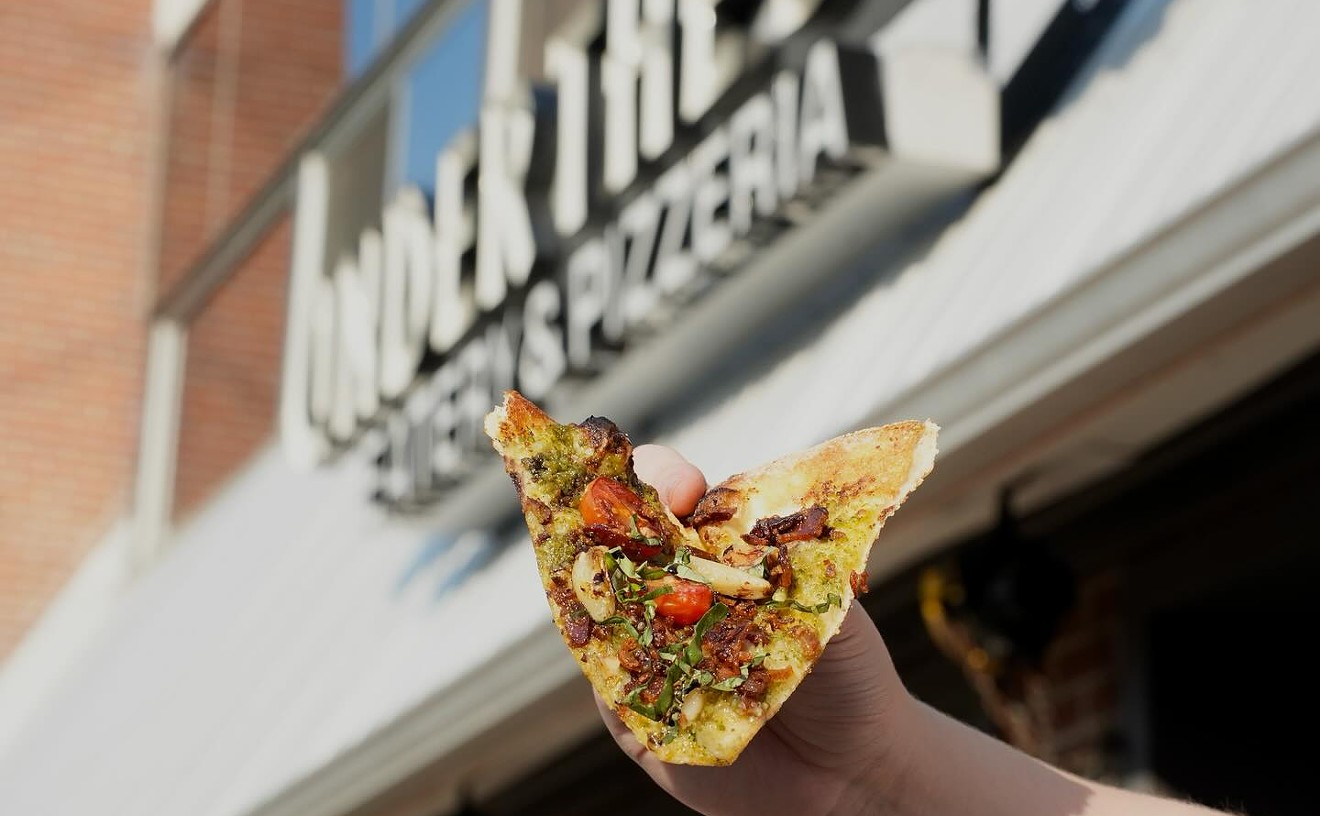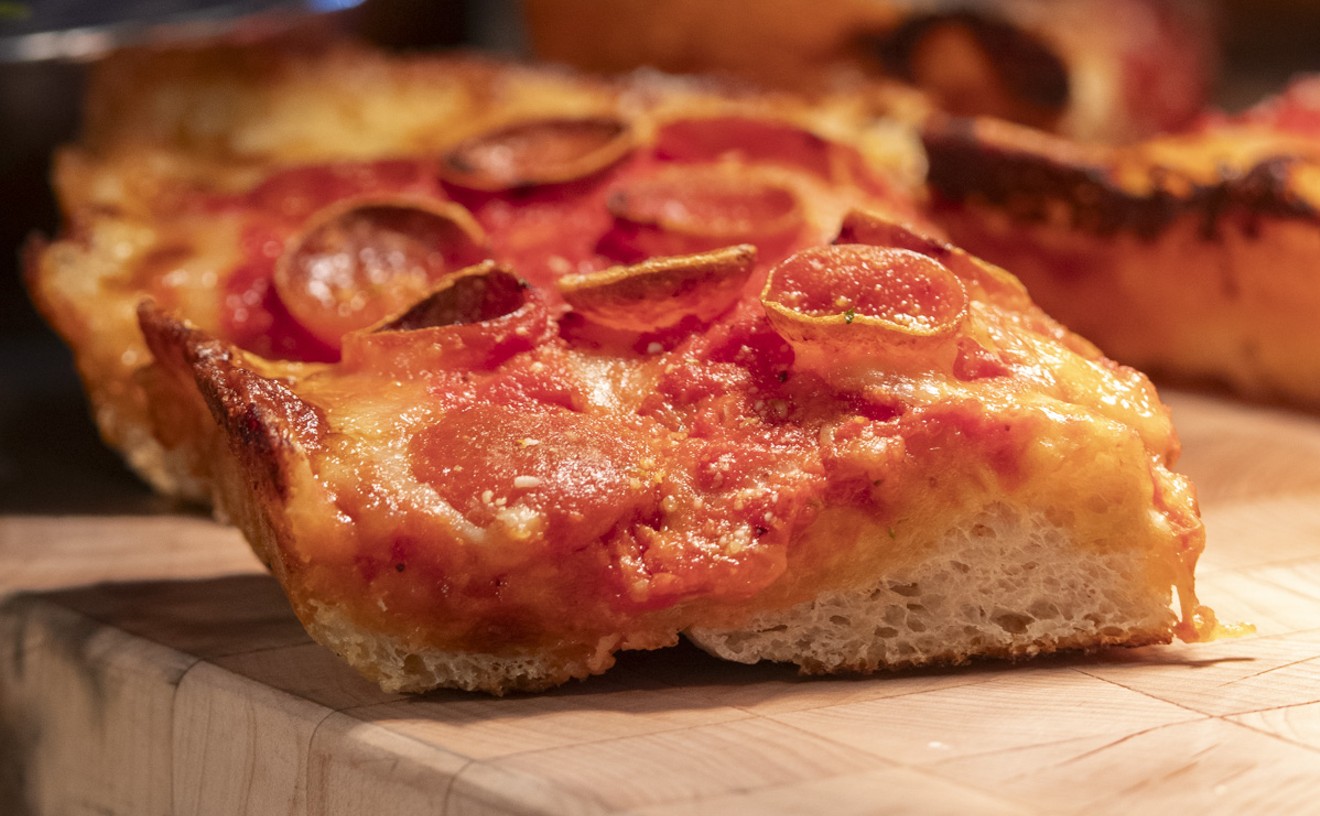Before there was lightweight backpacking food, there were Girl Scouts climbing mountains with canned goods. Troop leader Anne Benedict watched their struggle, and in 1951 began selling dehydrated just-add-water meals under her company Dri-Lite Foods. Twenty years later, it was rebranded to Backpacker’s Pantry when purchased by American Outdoor Products founder Ronald Smith.
“Ron was part of the original mountaineering crowd — the generation of Royal Robbins and Yvon Chouinard,” says his daughter-in-law and American Outdoor Products co-owner Soraya Smith.
While Backpacker’s Pantry is a favorite among outdoor enthusiasts, the Boulder-based manufacturer fuels more than just expeditions on Earth. Since 1974, sister brand Astronaut Foods has indulged the ultimate adventurer with freeze-dried ice cream.
“We know that astronauts and people in the space industry celebrate big wins, a launch, with the ice cream,” says Soraya, adding that Astronaut Foods really has been to space. “Having comforts of home [like] ice cream always feels good” — and probably tastes a whole lot better than the mush on board the Mercury missions.
“Ron was part of the original mountaineering crowd — the generation of Royal Robbins and Yvon Chouinard,” says his daughter-in-law and American Outdoor Products co-owner Soraya Smith.
While Backpacker’s Pantry is a favorite among outdoor enthusiasts, the Boulder-based manufacturer fuels more than just expeditions on Earth. Since 1974, sister brand Astronaut Foods has indulged the ultimate adventurer with freeze-dried ice cream.
“We know that astronauts and people in the space industry celebrate big wins, a launch, with the ice cream,” says Soraya, adding that Astronaut Foods really has been to space. “Having comforts of home [like] ice cream always feels good” — and probably tastes a whole lot better than the mush on board the Mercury missions.
Astronauts involved in the earliest manned space flights were given sustenance in squeeze tubes. But that rudimentary method wouldn’t cut it on Project Apollo, as some expeditions would last more than twelve days.
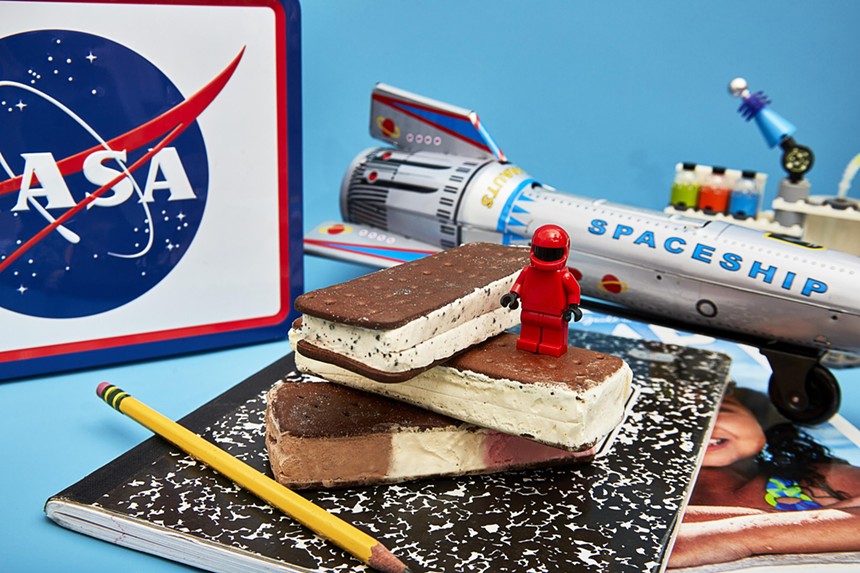 Dehydrated foods were accessible at the time, but exposing an ingredient to low heat for a long period causes it to lose some of its nutritional value. Seeking an alternative, NASA conducted extensive research through the 1960s and ’70s, and its lyophilization, or freeze-drying, technique proved to maintain nutrients, color, shape and — just as important — the flavor of foods.
Dehydrated foods were accessible at the time, but exposing an ingredient to low heat for a long period causes it to lose some of its nutritional value. Seeking an alternative, NASA conducted extensive research through the 1960s and ’70s, and its lyophilization, or freeze-drying, technique proved to maintain nutrients, color, shape and — just as important — the flavor of foods.
Though today’s vacuum-sealed machines are complex with proprietary recipes, freeze-drying dates back centuries, with evidence of the Incas repeatedly burying and unearthing potatoes in the high-altitude Andes. This cyclical thawing and freezing preserved the food and mirrors the commercial process done today.
To create Astronaut Foods novelties, Soraya explains, carts stacked with ice cream sandwiches are pushed into large freeze-drying tunnels. Their temperatures drop to 60 degrees below zero, then rise above freezing before dropping again. This cycle continues for more than 24 hours, off-gassing 98 percent of the products’ water content. The result looks identical to a cold ice cream sandwich, aside from the small air pockets indicating where ice crystals once appeared.

Though they have a brittle texture, these ice cream sandwiches look and taste familiar.
Karen Epstein/Astronaut Foods
Though today’s vacuum-sealed machines are complex with proprietary recipes, freeze-drying dates back centuries, with evidence of the Incas repeatedly burying and unearthing potatoes in the high-altitude Andes. This cyclical thawing and freezing preserved the food and mirrors the commercial process done today.
To create Astronaut Foods novelties, Soraya explains, carts stacked with ice cream sandwiches are pushed into large freeze-drying tunnels. Their temperatures drop to 60 degrees below zero, then rise above freezing before dropping again. This cycle continues for more than 24 hours, off-gassing 98 percent of the products’ water content. The result looks identical to a cold ice cream sandwich, aside from the small air pockets indicating where ice crystals once appeared.
Soraya notes that the slits in the ice cream sandwiches’ paper wrappers allow this vaporization to occur. The freeze-drying process is contracted out to another company, and upon delivery to its 45,000-square-foot facility, Astronaut Foods is quick to seal the goods in its light-protective and waterproof packaging.
“There is very little time for these ingredients to absorb any moisture from the air. That's why we don't have any liquid in the [production area],” she affirms. Because ice cream sandwiches are a novelty and not the kind of thing you’d hide away in your doomsday bunker, the brand does not include oxygen absorbers in its packages, as you’d find in Backpacker’s Pantry meals. But even then, these crisp yet creamy treats have a three-year shelf life.
However, Astronaut Foods quickly turns over its inventory. It’s the second-best-selling item at the Smithsonian National Air and Space Museum, which speaks to its product’s history. The concept came about when NASA Goddard Space Flight Center expressed interest in creating freeze-dried ice cream for its gift shop. No other company was producing it at the time and, according to Soraya, Astronaut Foods believes it was the first to do so. She explains, “They were originally freeze-drying those big drums of ice cream and chiseling out [portions] by weight” — with the help of a bandsaw and ice picks.
“There is very little time for these ingredients to absorb any moisture from the air. That's why we don't have any liquid in the [production area],” she affirms. Because ice cream sandwiches are a novelty and not the kind of thing you’d hide away in your doomsday bunker, the brand does not include oxygen absorbers in its packages, as you’d find in Backpacker’s Pantry meals. But even then, these crisp yet creamy treats have a three-year shelf life.
However, Astronaut Foods quickly turns over its inventory. It’s the second-best-selling item at the Smithsonian National Air and Space Museum, which speaks to its product’s history. The concept came about when NASA Goddard Space Flight Center expressed interest in creating freeze-dried ice cream for its gift shop. No other company was producing it at the time and, according to Soraya, Astronaut Foods believes it was the first to do so. She explains, “They were originally freeze-drying those big drums of ice cream and chiseling out [portions] by weight” — with the help of a bandsaw and ice picks.
“It's become so much more sophisticated since then,” she says, noting that an extruder is used to form consistent rectangular blocks of ice cream. The wafers are also a newer addition, creating Astronaut Foods’ four ice cream sandwich flavors: vanilla, cookies and cream, mint chocolate chip and its most popular, Neapolitan. This fan favorite is sold individually, as well as in a “banana split bundle” that includes pouches of freeze-dried bananas and whole strawberries.
 “It really is an iconic brand that people recognize from their childhood,” comments Soraya. Along with fifty years of museum gift shop success, Astronaut Foods has ties with space camps and received the STEM.org Authenticated trustmark in honor of its educational commitment. As an example, the brand recently visited the Air Force Academy in Colorado Springs, where the team spoke at three informational sessions on freeze-drying technology, how nutritional needs affect payload, and more on space exploration.
“It really is an iconic brand that people recognize from their childhood,” comments Soraya. Along with fifty years of museum gift shop success, Astronaut Foods has ties with space camps and received the STEM.org Authenticated trustmark in honor of its educational commitment. As an example, the brand recently visited the Air Force Academy in Colorado Springs, where the team spoke at three informational sessions on freeze-drying technology, how nutritional needs affect payload, and more on space exploration.
In speaking with cadets, Soraya witnessed “the excitement that space is really back.” She concludes, “For the longest time, the space program was pretty quiet, and now it’s ramping up. Astronauts are, again, having a moment.”

Astronaut Foods appears in museum gift shops, at space camps and more.
Karen Epstein/Astronaut Foods
In speaking with cadets, Soraya witnessed “the excitement that space is really back.” She concludes, “For the longest time, the space program was pretty quiet, and now it’s ramping up. Astronauts are, again, having a moment.”
For more information about Astronaut Foods, visit astronautfoods.com.

